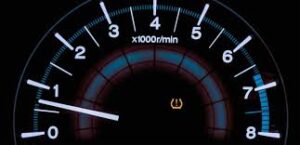Blog
“How to Read and Understand TPMS Warning Lights”
How to Read and Understand TPMS Warning Lights
The Tire Pressure Monitoring System (TPMS) in your vehicle is designed to enhance safety and performance by alerting you when tire pressure is too low or uneven. However, many drivers are unsure about the meaning of the warning lights and what actions to take. This guide will help you decode your TPMS warning lights and respond appropriately.
What Does the TPMS Warning Light Look Like?
The TPMS warning light typically appears as:
- A horseshoe-shaped symbol with an exclamation point inside (⚠️).
- In some vehicles, the light may spell out “TPMS.”
These symbols are usually located on the dashboard and illuminate in yellow or amber.
Types of TPMS Warning Light Alerts
- Solid TPMS Warning Light
- What It Means: One or more tires are underinflated below the recommended pressure.
- Action to Take:
- Use a tire pressure gauge to check the pressure in all four tires.
- Inflate the tires to the manufacturer’s recommended PSI (pounds per square inch), which can be found on the driver’s side door jamb or in the owner’s manual.
- If the light remains on, recheck the pressure or consult a professional mechanic.
- Flashing TPMS Warning Light
- What It Means: There may be a system malfunction. Common causes include a dead sensor battery, a damaged sensor, or a communication issue between the sensors and the vehicle’s onboard computer.
- Action to Take:
- Reset the TPMS system using the instructions in your vehicle’s manual.
- If the issue persists, have the system inspected and repaired by a professional.
- Intermittent TPMS Warning Light
- What It Means: This often occurs due to temperature fluctuations. For example, cold weather can temporarily lower tire pressure, triggering the light.
- Action to Take:
- Check and adjust the tire pressure after the vehicle has been parked in a stable environment for several hours.
- Monitor the light to see if it turns off as the tires warm up during driving.
Understanding TPMS Alerts for Different Tire Types
- Standard Tires
- Pressure should be maintained at the recommended PSI listed for your vehicle.
- Run-Flat Tires
- These are designed to function temporarily even with low pressure. A TPMS warning light still requires immediate attention to prevent damage.
- Spare Tires
- Some vehicles don’t monitor spare tire pressure. Always check the spare manually before using it.

Steps to Handle a TPMS Warning Light
- Stop and Inspect Safely
- If the TPMS light comes on while driving, find a safe location to pull over and inspect your tires for visible damage or flatness.
- Check Tire Pressure
- Use a quality tire pressure gauge to measure each tire’s PSI.
- Inflate or Deflate Tires
- Add or release air to bring the pressure within the recommended range.
- Reset the TPMS System
- Most vehicles allow you to reset the system after adjusting tire pressure. Refer to your owner’s manual for specific instructions.
- Seek Professional Help
- If the light remains on or flashes, visit a tire service center for further diagnosis.
What Causes TPMS Warning Light Activation?
- Low Tire Pressure
- Commonly caused by air loss due to punctures, leaks, or temperature changes.
- Damaged Sensors
- TPMS sensors inside the tire or valve stem can be damaged during tire replacement or by road hazards.
- Sensor Battery Depletion
- TPMS sensors run on small batteries that typically last 5–10 years. A dead battery requires sensor replacement.
- Tire Rotation or Replacement
- Failing to recalibrate the system after tire maintenance can trigger the warning light.
Importance of Addressing TPMS Warning Lights Promptly
Ignoring the TPMS warning light can lead to:
- Increased Risk of Accidents: Underinflated tires reduce grip and braking performance.
- Lower Fuel Efficiency: Proper tire pressure optimizes fuel consumption.
- Tire Damage: Driving on underinflated tires can cause uneven wear or blowouts.

Tips for Maintaining Your TPMS
- Regular Tire Pressure Checks: Check your tire pressure at least once a month and before long trips.
- Routine Sensor Maintenance: Have sensors inspected during tire rotations or replacements.
- Learn the Reset Procedure: Familiarize yourself with the reset process for your vehicle’s TPMS.
- Monitor Seasonal Changes: Check tire pressure more frequently during extreme weather changes.
Conclusion
The TPMS warning light is a critical tool for ensuring tire safety, but understanding its signals is essential for effective action. By learning to read and respond to TPMS alerts, you can protect yourself, your passengers, and your vehicle.
Stay informed and proactive—proper tire maintenance and a functional TPMS system are key to safe driving. For more tips and guides, visit RegalXmuse.com!


